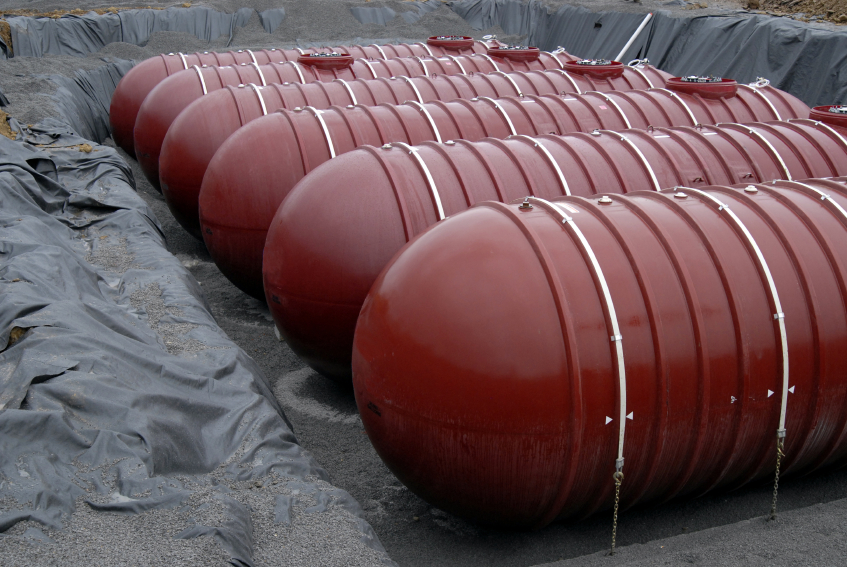 |
Even if you have insurance to cover repairs, bringing a damaged UST back up to code can be a lengthy process, particularly if the flooding is widespread and qualified UST contractors are in high demand. Damages could include piping connections broken by movement, compromised electrical and leak prevention/detection systems, infiltration by water, and loss of product. Loss of product can lead to environmental pollution and the attendant remediation obligations and costs.
Any business owner/operator that has been affected by flooding knows how destructive water infiltration and soil erosion can be. While it may be next to impossible to avoid all damage from complete and protracted inundation, there are measures that can be taken to keep the UST in place and prevent loss of product. Also, in less catastrophic conditions, a UST system that has been prepared for the risks posed by surface-level floodwater or rising groundwater can be brought back online relatively quickly.
Given the widespread presence of USTs and the potential for flooding in most parts of the country, many state agencies have developed guidance on preparation and response. The EPA has a guidance document summarizing the recommendations on USTs and flooding from five state agencies. Information from such industry associations as the American Petroleum Institute and the Petroleum Equipment Institute was also incorporated into the guidance.
The guidance, in part, lists actions to take before a flood. While there are baseline federal requirements pertaining to UST leak prevention and detection and incident reporting, USTs are also heavily regulated by state and local environmental agencies.
Note: Any guidance from the EPA should be supplemented with an understanding of state- and community-specific provisions.
Forget expensive calls to lawyers and consultants. With Enviro.BLR.com, you get instant access, 24/7. Try it out today and get the 2015 EHS Salary Guide, absolutely free. Download Now.
Before a Flood
If flooding is a near-term possibility, take the following eight steps:
- Turn off all electricity to the UST system, including power to dispensers, pumps, turbines, automatic tank gauging (ATG) consoles, lighting, and any other system components.
- Take product inventory and water-level readings of all USTs to help account for possible product loss.
- Fill the tank to weigh it down so that it will not float out of the ground.
- Secure all openings on top of the tank, and make sure fill caps are in good condition and fastened securely in place and locked. If fill caps are not tightened, tanks will fill with water and release product. Empty or near-empty tanks may float up, destroying overlying concrete/ asphalt and distribution lines, which can also release product.
- Make sure the seals on spill bucket plungers are operational so that water cannot enter the tank.
- Close the shear valve on pressurized piping to prevent releases from product dispenser lines.
- Temporarily cap the vent pipes to prevent water from entering the tank and displacing product.
- Place a Dumpster, sand bags, or large containers full of sand or rock over the tank to reduce the chance of a tank floating out of the ground.
Everything You Need for Environmental Compliance
Enviro.BLR.com puts everything you need at your fingertips, including practical RCRA, CAA, CWA, hazardous waste regulatory analysis and activity, news, and compliance tools. Try it at no cost or risk and get a FREE report.
If You Are in a Flood-Prone Area
If you are designing and constructing a UST system and you are in an area subject to flooding, here are some tips to consider in the process:
- Increase the burial depth and/or amount of pavement above the UST. The extra weight of the backfill and pavement may be enough to keep the tank from floating. Note, though, that the burial depth should not exceed the manufacturer’s recommendation.
- Anchor the UST to counteract the buoyancy force exerted by saturated soil during a flood to prevent flotation.
- Use hold-down straps to securely attach the tank to a bottom hold-down pad.
- Equip fuel lines below the flood elevation level with automatic shutoff valves to prevent loss of fuel in case the line breaks or disconnects from the UST.
- Add an extension to the vent pipe if it appears the tank may be submerged in deep flood waters. This will help prevent water from entering the tank where it would settle at the bottom, pushing product out.
